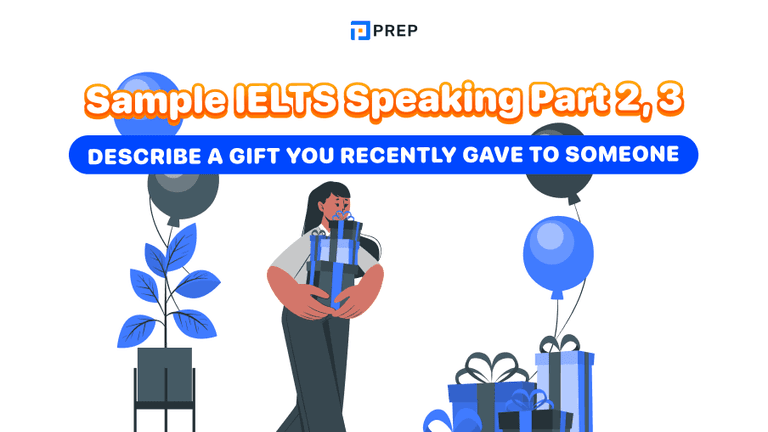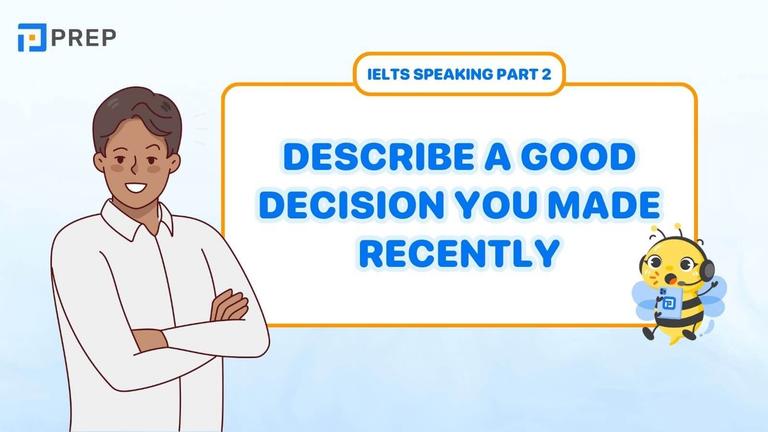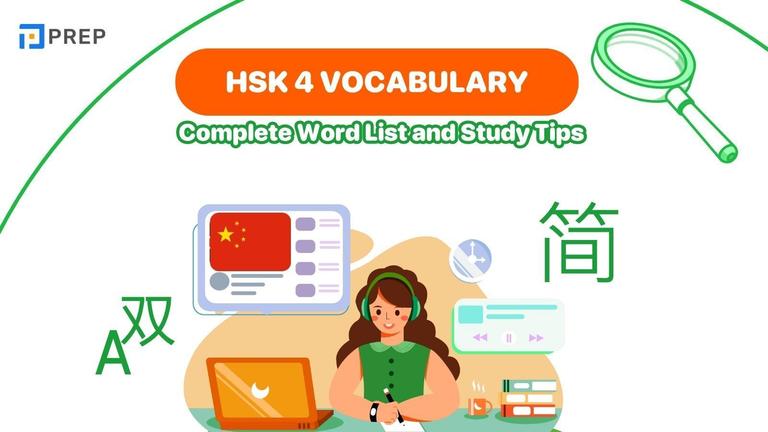Contrast Clause in English: Meaning, Structures, and Usage
Contrast clauses help you express opposing ideas clearly and logically in English. This guide explains their meaning, common structures, key connectors, and differences from similar grammar forms. You will also find IELTS-focused usage tips and practical exercises to improve accuracy.

I. What Is a Contrast Clause?
A contrast clause is a subordinate (dependent) clause that expresses a contrast or opposite idea in relation to the main clause. In simple terms, it shows a difference or contradiction between two ideas within the same sentence.
Example: Although she was tired, she continued working.
In this sentence, the contrast clause “Although she was tired” highlights an idea that contrasts with the main clause “she continued working”.
Contrast clauses are used to:
-
Show opposing ideas or exceptions
-
Balance two different perspectives within a sentence
-
Create more natural, coherent, and sophisticated sentences
They help avoid overusing simple connectors like “but” or “however”, making your speech and writing more flexible and advanced.
Example: While some people prefer living in cities, others enjoy the countryside.
This balanced structure enhances clarity, nuance, and cohesion — especially useful in formal writing.
In academic contexts such as IELTS Writing Task 2 or argumentative essays, being able to express contrast is critical for:
-
Explaining opposing points of view
-
Developing complex and coherent arguments
-
Demonstrating control over advanced grammar structures
Using contrast clauses appropriately improves your score in Coherence and Cohesion and Grammatical Range and Accuracy, which are key components in IELTS and other writing assessments.

- For a structural review, see learn english grammar.
1. Common Contrast Clause Structures in English
There are several ways to express contrast in English using specific subordinating conjunctions and linking expressions. Below are the most common contrast clause structures, grouped by function and usage level.
Although / Though / Even Though Clauses
These are some of the most frequently used subordinating conjunctions to introduce contrast within a single sentence.
|
Connector |
Usage |
Example |
|
Although |
Neutral/formal – often used in writing |
Although it was raining, they still went hiking. |
|
Though |
Informal variation of “although” – often used in speech |
She enjoyed the movie, though it was a bit long. |
|
Even though |
Stronger emphasis than “although” – highlights surprise or contrast |
Even though he was experienced, he made several mistakes. |
Note: These connectors can be placed at the beginning or in the middle of a sentence. When used at the beginning, the contrast clause is followed by a comma.

While and Whereas Clauses
“While” and “whereas” are used to compare two ideas or situations — often placed in parallel structure in comparative or argumentative writing.
|
Connector |
Usage |
Example |
|
While |
Indicates contrast between two situations; also used for simultaneity |
While I prefer tea, my brother drinks coffee. |
|
Whereas |
More formal and often used in academic contexts |
Cats are independent, whereas dogs are more sociable. |
Tip: These are ideal for balanced sentence structures that present opposing views or options — very useful in IELTS Writing Task 2 and formal discussions.
Even If / However / In Contrast / On the Other Hand
These expressions show contrast but differ in structure and positioning within the sentence.
|
Connector |
Type |
Usage |
|
Even if |
Subordinating conjunction |
Even if I study all night, I might not pass. |
|
However |
Sentence connector (transition word) |
The plan was risky. However, they went ahead with it. |
|
In contrast |
Sentence connector |
The north is cold. In contrast, the south is warm. |
|
On the other hand |
Discourse connector |
Some people enjoy crowds. On the other hand, others prefer solitude. |
Important: Unlike contrast clauses, these connectors are usually used to connect two full sentences, not in the middle of one clause. For guidance on sentence-level transitions and punctuation, see finally at last lastly in the end and at the end.
By mastering these contrast clause structures, you’ll be able to write and speak more fluently, especially when expressing differing opinions, comparing arguments, or adding nuance to your ideas.

2. Contrast Clause Connectors
To express contrast effectively, choosing the right connector is essential. Using a variety of contrast clause connectors helps you:
-
Avoid repetition (e.g. overusing “but” or “although”)
-
Adapt language for different levels of formality
-
Build more sophisticated and coherent sentences
Below are the most common contrast connectors — grouped by tone and usage.
Neutral and Common Connectors
These connectors are widely used in both speaking and writing. Most are suitable for formal, semi-formal, and academic contexts.
|
Connector |
Example Sentence |
|
although |
Although he is young, he’s very mature. |
|
though |
She came to the party, though she didn’t stay long. |
|
even though |
Even though it’s cold, they’re going hiking. |
|
while |
I love coffee, while my sister prefers tea. |
|
whereas |
Tom is reserved, whereas Jerry is outgoing. |
|
even if |
Even if it rains, the event will continue. |
Notes:
-
“Even though” is stronger than “although” or “though”
-
“While” and “whereas” are often used to compare ideas side by side
-
These connectors typically go at the beginning of a subordinate (dependent) clause
Informal Connectors for Speaking
When speaking casually, especially in conversation or basic writing (e.g. personal emails, social media), these connectors are more natural:
|
Connector |
Example Sentence |
|
but |
I wanted to go out, but I was too tired. |
|
even so |
It was expensive. Even so, I bought it. |
|
still |
She’s not experienced. Still, she got the job. |
|
yet |
He failed the test, yet he didn’t seem upset. |
|
though (end use) |
It’s hard. I enjoy it, though. |
Notes:
-
“Even so”, “still”, and “yet” usually connect two full sentences
-
“Though” is very flexible in speech — it can appear at the end of the sentence
Varying your connectors makes your writing more dynamic and natural. Overusing “but” or “although” can feel repetitive, especially in academic writing. Using options like “even though”, “whereas”, and “even so” shows confidence and grammar range — especially useful in exams like IELTS or TOEFL.
3. Contrast Clause vs Similar Grammar Structures
Many learners confuse contrast clauses with other grammatical structures that also express contrast, such as concessive phrases or sentence-level transitions. While they share similar meanings, their grammatical forms and positions in a sentence differ.
Although vs Though vs Even Though
These three connectors all introduce dependent clauses expressing contrast, but they differ slightly in formality and emphasis.
|
Connector |
Formality |
Usage |
Example |
|
although |
Neutral to formal |
Used in both writing and speaking |
Although it was cold, we went outside. |
|
though |
More informal |
Common in speaking, often at the end |
I like the idea. It’s hard, though. |
|
even though |
Stronger emphasis |
Highlights surprising contrast |
Even though he studied, he failed the test. |
Tip: “Even though” gives more emotional or surprising weight to the contrast than “although” or “though”.
Contrast Clause vs Concessive Clause (Despite / In Spite of)
Despite and In spite of are concessive expressions, and although they serve a similar function to contrast clauses, they do not introduce full clauses but rather nouns or gerunds.
|
Structure |
Grammatical Form |
Example |
|
Although clause |
although + subject + verb |
Although he was tired, he kept going. |
|
Despite phrase |
despite + noun / gerund |
Despite feeling tired, he kept going. |
|
In spite of phrase |
in spite of + noun / gerund |
In spite of the rain, they went hiking. |
Tip: Do not use “despite” or “in spite of” with a full clause like “despite he was late” .
Clause-Level vs Sentence-Level Connectors
It’s important to distinguish place and punctuation differences:
|
Type |
Connector Examples |
Structure |
Example |
|
Clause-level (subordinating) |
although, even though, while, whereas |
In one sentence; link two clauses |
She smiled although she was nervous. |
|
Sentence-level (transitional) |
however, nevertheless, still, in contrast |
Separate sentences or after semicolon |
He was tired. However, he kept running. |
Punctuation note: Sentence-level connectors usually follow a period or semicolon and are capitalized as they begin a new sentence idea.
Understanding these distinctions will give you flexibility and precision — especially in writing essays, reports, or formal emails where variation in structure matters.
-
For a quick review of auxiliaries and punctuation in sentence construction, see auxiliary verbs.
II. Using Contrast Clauses in IELTS Writing and Speaking
Using contrast clauses correctly and naturally in your IELTS responses can significantly improve your clarity, flow, and score in both writing and speaking. These structures help you present balanced arguments, express opposing views, or introduce exceptions — all of which are key in academic communication.
Using Contrast Clauses in IELTS Writing Task 2
In Writing Task 2, you are often asked to discuss both views, give your opinion, or present a counter-argument. Contrast clauses allow you to:
-
Introduce contrasting positions (e.g. governments vs. individuals)
-
Show balance and complexity in your reasoning
-
Avoid repetitive structures like "but" and "however"
Common structures to use:
|
Connector |
Usage in IELTS |
Example sentence |
|
Although |
Stating an opposing idea |
Although some believe education should be free, others disagree. |
|
Even though |
Adding emphasis to the contrast |
Even though fossil fuels are widely used, they are damaging to the planet. |
|
Whereas |
Comparing two perspectives |
Whereas some people value job security, others prioritize high income. |
|
While |
Subtle contrast between two ideas |
While electric cars are beneficial, they may not suit every country. |
Tips:
-
Start contrast clauses at the beginning or middle of complex sentences to show grammatical range.
-
Use them in both the introduction and body paragraphs when comparing ideas.
-
Make sure the contrast is logical and relevant to the essay topic.
For practical essay strategies, see IELTS writing task 2 tips.
Using Contrast Clauses in IELTS Speaking
In Speaking (Parts 2 and 3), contrast clauses help you:
-
Give nuanced answers
-
Compare two options or people
-
Express disagreement or an exception
-
Sound more fluent and natural
Example Part 2 – Descriptive Answer
“I recently visited a small coastal town. While it wasn’t a popular tourist destination, I found it peaceful and beautiful.”
Example Part 3 – Opinion and Justification
“Some people enjoy working in big companies, whereas others prefer smaller firms for flexibility and a better work-life balance.”
Tips:
-
Use “although” and “though” in a conversational way to add contrast naturally.
-
Practice contrast clauses with speaking drills to increase fluency.
-
Avoid overusing “but” — switch between although, even though, while, whereas for variety.
Mastering contrast clauses in IELTS not only strengthens your grammar score (Grammatical Range and Accuracy) but also increases coherence and argument clarity, helping you reach Band 7.0 and above more consistently.
-
To expand advanced connectors and lexical range, see Enrich Your IELTS Vocabulary.
III. Practice Exercises – Learn by Doing
Now that you’ve learned how contrast clauses work, it’s time to put that knowledge into action. Below are practical, exam-style exercises to help you reinforce your understanding and gain more control over using contrast structures in both writing and speaking contexts.
Exercise 1: Fill in the Blanks
Instructions: Complete each sentence using a suitable contrast connector from the word bank.
Word bank: although · whereas · even though · while · in contrast
-
__________ public transport is more eco-friendly, many still prefer to drive.
-
My sister enjoys classical music, __________ I love pop.
-
He didn’t study much. __________, he passed the exam with ease.
-
__________ she tried her best, she couldn’t solve the puzzle.
-
I like working in a team, __________ my colleague prefers doing things on his own.
Exercise 2: Sentence Transformation
Instructions: Rewrite the following pairs of sentences using a contrast clause (e.g. although, while, even though…).
-
I was tired. I stayed up to finish the project.
-
The dress is expensive. She bought it anyway.
-
Mike is very outgoing. His brother is quiet.
-
The test was difficult. Most students passed.
-
It was raining. They played football.
Exercise 3: Error Correction
Instructions: Each sentence below contains an error in the use of a contrast clause. Identify and correct it.
-
Despite he was tired, he finished the task.
-
Although it was raining, but they continued the event.
-
She enjoys tea. In contrast she prefers coffee.
-
Even though of the high cost, the course was full.
-
He passed. Even though he hadn’t studied.
Answer Key
[prep_collapse_expand open_text="View more" close_text="Show less"]
|
Exercise 1 |
Exercise 2 |
Exercise 3 |
|
|
|
[/prep_collapse_expand]
By practicing regularly, you’ll use contrast clauses more naturally and accurately — an essential skill for high scores in IELTS Writing & Speaking and effective communication in academic or professional English.
-
For targeted exam practice, try IELTS Vocabulary Booster.
IV. Prepare for IELTS Anytime, Anywhere
PREP hopes you've gained a good understanding of the definition and the structure for forming contrast clauses in English. If you want to learn on your schedule with our flexible online courses. Access lessons, practice tests, and expert guidance anytime to fit your busy life below:
- IELTS preparation online: Sign Up Now and Fast-Track Your IELTS Prep

Hi I'm Chloe, and I am currently serving as an Product Content Administrator at Prep Education. With over five years of experience in independent online IELTS study and exam preparation, I am confident in my ability to support learners in achieving their highest possible scores.
Comment
Premium content
View allPersonalized roadmap
Most read












